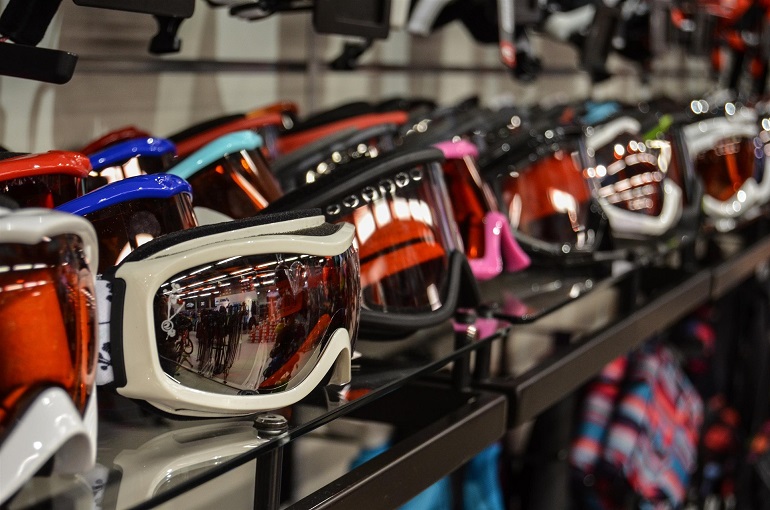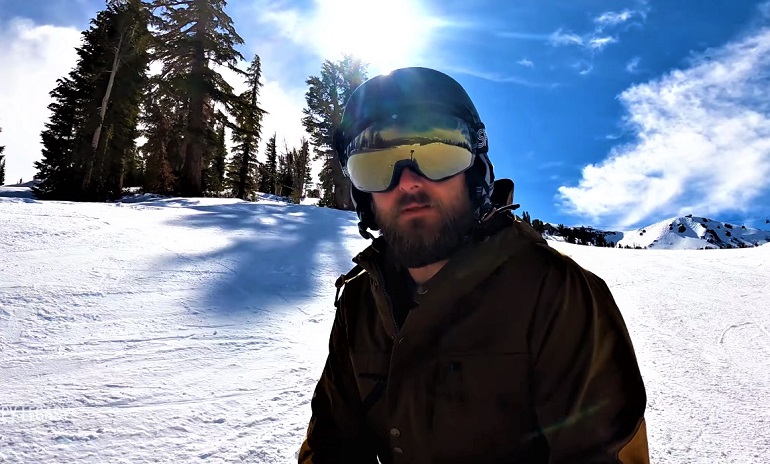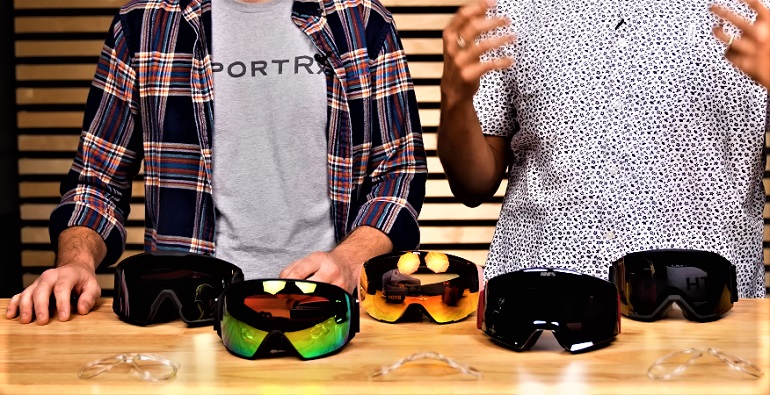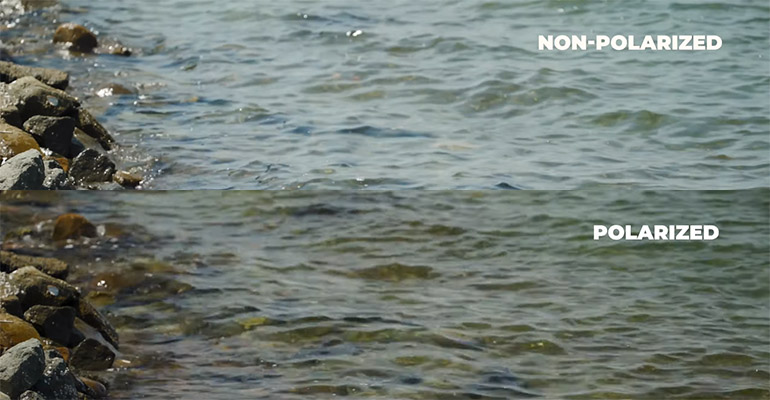When shopping for sports equipment, I always get a tad bit tentative and nervous. Because there’s always this nagging feeling at the back of my head that I don’t quite know what I’m doing.
The first ski goggles I swiped my credit card for were… well let’s say they did not do the job right.
And it was after my first (failed) experience of buying ski goggles that I buckled down and did my research about the visible light transmission (VLT), lens color, anti-fog coating, VLT ranges, and VLT percentage.
Today, I will be breaking it down for you guys to understand how to make your skiing/snowboarding experience easier and safe regardless of the weather conditions.
What Is Visible Light Transmission (Vlt) in Ski Goggles?
Visible light transmission in the best ski goggles translates to how much light is allowed to penetrate through the lenses and reach your eyes.
Skiers and frequent snowboarders are well aware of how important light is for your game, fluidity, and performance.

On sunny days the light reflecting off the snow is blinding, whereas on overcast days it is relatively darker, which makes it harder to see.
Therefore, the VLT range in ski goggles helps in keeping the light conditions uniform and neutral to help you focus on your strategy and game rather than squint for light.
With a razor-sharp concentration on the path ahead of you and not a thought spared for anything else, your performance is bound to soar.
What Is the Vlt Percentage in Ski and Snowboard Goggles?
In ski and snowboard goggles, a higher VLT percentage means more light passes through the lenses and reaches your eyes. Similarly, lower VLT in ski goggles will decrease how much light your eyes can see.
In ski and snowboard goggles, the VLT ranges go from 5% to 100% (there is absolutely no need for 0% VLT goggle lenses).
Where 5% VLT ranges are typically better suited for bright conditions like on sunny days, the higher VLT is for those low light cloudy snowy days.
What Is a Good Vlt Range for Ski Goggles?
There is no rule book to dictate which is the right VLT for you, as it depends entirely on the changing conditions, situations, and scenarios, and sometimes just one pair of ski goggles won’t cut it.
5%-20% Vlt Range
The first ski goggles I purchased were of this range, and they were just perfect for sunny days. Because they filter in much less light, the contrast of the sun against the snow doesn’t blind you or even make you squint while skiing.

However, the crucial point to remember here is that these goggles with lower VLT are a great fit for sunny conditions (only).
Therefore, on snowy days when the world looks like a big ‘ol dark gray ball of cloudy sadness, these ski goggles aren’t much use.
20%-50% Vlt Range
Ski goggles with this lens range are still considered on the lower VLT spectrum but work really well on overcast days as well as on light sunny days.
After my first purchase disaster, these were the ski goggles I was advised to purchase instead, as they are just the right VLT fit for moderately sunny days and cloudy weather.
50%-70% Vlt Range
This higher VLT range is an ideal selection for skiers skiing during the small hours of the day (before sunrise or after sunset) or on cloudy days.
Not just that, but if you’re skiing on a snowy day with low far-off visibility, then wearing goggle lenses in this range makes it quite a lot easier to navigate.
70%-95% VLt Range
You could easily say that ski goggles in this range are more for protecting you from obstacles, stray branches, and snow rather than light filtering.
Skiers who enjoy night skiing are to look no further than buying goggles from this VLT range. Quite a lot of light is allowed through, therefore the light intensity is almost exactly the same one you view with your eyes.
What Are the Best Lens Colors for Different Vlt Ranges?
The lens color of your ski goggles also plays a major role in setting and tuning the environment for your eyes. For different high and lower VLT ranges, there are corresponding lens colors:
Best Lens Colors for 5%-20%
Take it as a rule of thumb that the lesser light allowed in calls for darker color lenses. Ski goggles that filter in minimal light are best bought in mirrored colors (green or blue) or dark ones (dark gray/red/orange/copper).

Best Lens Colors for 20%-50%
A moderate VLT percentage calls for a moderate lens color as well. You are advised to go for medium colors. Yellow, green, rose, and amber goggles lenses are all perfect options for skiing in similarly moderate weather.
Best Lens Colors for 50%-70%
As I mentioned above, the lower the VLT, the darker the lenses should be. Adversely, a higher VLT calls for lighter lenses. So for a 50-60% range, keep an eye out for all lenses that are referred to as light. Low-light rose, orange, and yellow lenses are prime choices for goggles.
Best Lens Colors for 70%-95%
The lightest colors are recommended for this high range. In fact, if you can get your hands on a transparent pair of goggles in this range, then you’re all set. Light pink/gray, and flat light yellow are other goggles to also look into.
What Are Polarized Ski Goggles?
Polarized ski goggles are manufactured differently than usual ski goggles as they have a chemical filter on the lenses that block strong light.

On harsh sunny days, these are your finest fit with clear contrast and vivid clarity. Some polarized goggles come with UV protection too. Just the cherry on top!
However, as much as these goggles are essential in blocking out the sun’s glare, sometimes that is essential when skiing as it differentiates between ice and snow.
With glare completely out of the picture, you might want to choose your skiing route with much care.
Nevertheless, the advantages of skiing with these goggles are worth it. These goggles reduce eye-straining, headaches, and the ones that come with UV protection protect your sensitive skin from the harsh sun rays.
FAQ’s
What Do Different Color Goggle Lenses Do?
Goggles lens color is important in filtering varying amounts of light to the wearer’s eyes.
Colors like dark red and mirrored goggles will let in lesser light whereas lighter goggles lenses (like light gray and night yellow) will allow more light to reach your eyes. Choosing a color depends entirely on what time and what climate you are going to ski in.
Are Interchangeable Ski Goggles Good?
The top favorite goggles in the market currently are interchangeable ones (basically one pair of goggles that come with different lenses that you can swap out depending on what tint you want and the external conditions).
These goggles are both a great investment and really useful for avid skiers who frequently go skiing and can’t afford to let external scenarios (bright sun/snowy cloudy days) affect their skiing performance.
It also prevents you from buying multiple different shapes to fit your requirements. That is yet another plus point that reduces clutter when you’re packing to go on a sports trip.
How to Prevent Ski Goggles from Fogging?
First, make sure you don’t touch the lenses from the inside when you clean them (you could remove the anti-fogging coating).
Secondly, ensure ventilation isn’t obstructed by lifting the goggles to let some air refresh them every now and again.
Finally, check if there’s a healthy flow of cold air between your ski face mask and goggles.
How Long Should My Ski Goggles Last?
Yes, everyone expects goggles to last with you for years on end, but every piece of equipment has a shelf life. The best of the best products will last with you for a maximum of 4 years, and after that, you must change them.
Don’t try to extend their life as that could reduce the quality of the lenses and cause skiing accidents due to weakened visibility.
Can I Ski Without Goggles?
Absolutely not! That’s like riding a motorcycle without a helmet. Skiing is a fast sport that requires you to swiftly navigate out in the open wild nature. You can never tell what could come whizzing out of nowhere in your face or eyes.
Conclusion
Skiing is both a highly particular and demanding sport that requires you to pay extra attention when picking out your equipment.
Visible light transmission (VLT) determines how much percentage of external light is allowed to meet your eyes under the goggles.
Depending on how much lighting there is, you should pick a lower VLT percentage for brighter days and a higher percentage for dimmer days.
0 Comments